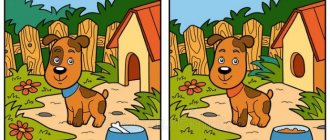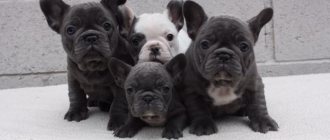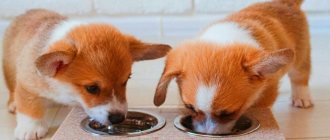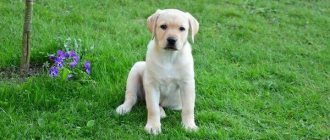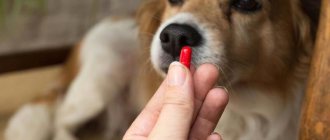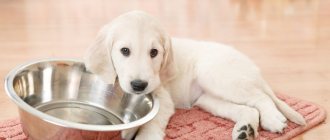Young puppies go to the toilet much more often than older dogs. Although newborn puppies tend to go after each meal, older puppies can contain their bladders for several hours. During first toilet training, you will have to give your puppy plenty of opportunities throughout the day to go outside so that he doesn't have accidents indoors.
House training a puppy to toilet is one of the biggest challenges a new puppy owner has to face. It is impossible to take the puppy outside too often so that he can “go to the toilet.” The number of times your puppy needs to be taken outside will vary depending on the puppy's age, how well house trained he is, and how many times he eats per day. Let's find out how often do puppies go to the toilet?
Expect your puppy to need to go to the toilet at least five to six times a day.
Newborn puppies
Newborn puppies actually cannot go to the toilet on their own without the help of their mother. A mother dog stimulates her puppies to go potty by licking their butts. Typically, most puppies go to the toilet after feeding, about every 2 hours or so. Sometimes a small puppy will not go to the toilet after eating, but instead will run errands after the next feeding. Once the puppy reaches 3 to 4 weeks of age, he will be able to go to the toilet on his own, with approximately the same frequency.
How to train a puppy to wear a diaper
When you get a puppy, new things for him will definitely come into your apartment. A bed, bowls, toys and most importantly, they are diapers.
Dogs, small or large, as puppies are not able to wait to be taken outside to the toilet. Babies go to the toilet every couple of hours, and the younger they are, the more often this happens. In addition, very small dogs do not go out for walks at all until they reach three months of age, have received all the necessary vaccinations, and go about their business in the house. To ensure cleanliness and order in the apartment, diapers are used. Later, when the dog grows up and stops pooping and peeing at home, they are removed, but in some cases, mainly with small breeds, they can leave them for good and even buy a special toilet for dogs.
One way or another, with any puppy we first go through the process of training to a specially designated place.
Four to eight weeks
The mother feeds the puppies until they are 6 weeks old or the mother stops feeding. They will go to the toilet at any time since they are fed when they want. Solid food is introduced when the puppy is approximately 4 weeks old. Gradually, the puppy transitions from mother's milk to solid food. By the time the puppy is 8 weeks old, he will only eat solid food. If your puppy is allowed to eat when he wants, he will go to the toilet when he needs to.
© shutterstock
How to recognize the disease
If the puppy, as it seems to his owners, urinates very often, then at first it’s worth just watching him carefully. The fact is that even a completely healthy kitten is capable of urinating more than 10 times every day. But, if other changes are noted, then you should worry about the health of the baby and show him to a veterinarian as soon as possible.
Polydipsia
If a dog urinates frequently due to the development of polydipsia, then it will drink a lot. The daily permissible volume of water is exceeded several times, so you should not be surprised at excessive urination. To confirm the diagnosis, it is necessary to do an ultrasound. In parallel, bitches often develop pyometra. As a rule, this disease is a consequence of renal failure, genitourinary infection, and diabetes mellitus.
Frequent walks with the dog outside
Note! Trying to treat this disease on your own is extremely dangerous; you need to take your pet to a veterinarian as soon as possible.
Ectopia
Ectopia is a congenital disease that causes frequent urination. Diagnosed based on the test results. In most cases, the disease is diagnosed in female dogs. Sometimes surgical intervention is necessary to treat the disease; in some cases, urography is used.
Diabetes
This is a clinical syndrome characterized by an absolute and relative deficiency of insulin in the animal's body. In this case, decompensation of all types of metabolism occurs.
A serious disease develops due to insufficient production of insulin by beta cells, as well as by the pancreatic islet of the pancreas. Such conditions develop due to hereditary/genetic predisposition, with the development of autoimmune disorders when the pancreas cannot function correctly.
Against the background of disruption of the digestive tract, the animal may hiccup frequently, and its appetite may increase or, on the contrary, disappear. Dermatitis often develops due to dehydration. Due to itching, the dog may scratch and try to bite itself for relief.
Spinal injuries in dogs
Injuries
The cause of frequent urination can be spinal injuries, after which the nerve endings and the spinal canal are damaged. If the breed, due to its physiological characteristics, has an elongated spine, then the likelihood of developing the problem increases even more.
Diabetes insipidus
This is a chronic pathology, which is accompanied by copious discharge of clear urine with low specific gravity. It develops against the background of impaired reabsorption of water in the animal’s body, namely in areas of the kidney tubules. It develops mainly after injuries to the spine and skull, hemorrhages and tumor processes.
Developmental symptoms:
- severe thirst, polyuria;
- the volume of discharge instead of the required 1 liter is 3-4 liters;
- urination is painful;
- urine is clear and yellow in color.
Due to the constant loss of fluid in large quantities, the pet loses weight, its mucous membranes and skin are prone to dryness, and a rapid heartbeat.
Unfortunately, both large, strong dogs—German Shepherds—and decorative breeds—Chihuahuas and Yorkshire Terriers—may encounter similar problems. Such pathologies are not uncommon among outbred representatives of the species.
Night trips to the toilet
Most puppies can usually sleep about seven hours at night without requiring a toilet break. However, when puppies first arrive in your home, you may need to take the puppy out at least once during the night until he is older, around 5 to 6 months. If you are away from home during the day for more than four hours at a time, have someone walk your puppy to give him a toilet break. Feed your puppy on a daily schedule to not only monitor his appetite, but also to monitor his toilet habits so you know when he needs to leave for errands.
When should you train your dog to wear a diaper?
Many breeders begin to train babies to pee right away by placing disposable bedding inside the puppy pen.
Particular attention is paid to representatives of decorative breeds, such as, for example, Chihuahua, Yorkshire Terrier or Spitz. After all, it is small dogs that often go to the toilet for diapers, even as adults. This is very convenient, since the dog does not have to wait until a walk, and the owner does not have to worry if he is late at work.
But it is worth remembering that toilet training your little friend at home does not eliminate the need for daily walks. Dogs need walks not only for the sake of the toilet, but also for a full and prosperous life and health, especially mental health.
Supervision
Puppies do not understand the difference between going outside or inside to go to the toilet and need to be taught. When the puppy goes loose in the house, the owner is to blame for not watching him. For this reason, a puppy should never be allowed to roam freely around the house before it has been fully toilet trained.
This does not mean that the puppy should be locked in his crate all the time either. Invest in a baby gate to confine your puppy to one room, like the kitchen, so he can feel free to roam while you keep an eye on him.
How many times a day does a puppy pee normally?
A small puppy can easily be compared to a human baby: both have a fast metabolism compared to an adult human and a dog, causing the child and puppy to urinate a lot.
Healthy frolicking puppy
But it is also worth considering that all organisms are individual and the frequency of urination depends on quite a large number of factors. For example, on age, the amount of water drunk per day, ambient temperature and, of course, nutrition. On average, the number of urinations per day ranges from 5-10 times.
Note! How often a puppy pees is affected by the natural or dry food he eats.
In veterinary medicine, there are variants of the norm that do not require therapeutic measures. In some cases, deviations are corrected with alternative treatment methods. In veterinary medicine, there are three types of reasons for frequent urination, which are considered normal:
- natural;
- age;
- behavioral.
Now it’s worth familiarizing yourself with each group in more detail.
Natural causes of frequent urination
Natural triggers that cause your pet to urinate frequently can cause controlled and uncontrolled urinary and fecal incontinence. An animal may go to the toilet frequently for the following reasons:
- Congenital/natural uncleanliness of the pet. Incontinence can be provoked by improper upbringing, when the dog is not instilled with a conditioned reflex that it should correct its needs strictly on the street during its walks in the morning or evening.
- Severe stress accompanied by feelings of anxiety, fear or extreme excitement. To help your beloved pet, it is recommended to create a friendly and calm environment around him. If necessary, an injection of a sedative may be given.
Important! Medicines can be used if the pet is not prone to developing allergic reactions.
Age characteristics
Quite often they are provoked by frequent urination and age-related changes in the animal’s body. For example:
- In young bitches, similar problems can be observed against the background of delayed formation of the genitourinary and hormonal systems. Various factors can provoke such deviations; the most common include poor heredity, poor quality/unbalanced nutrition, or a deficiency of vitamins, macro- and microelements in the body.
- Frequent urination is also observed in young females during estrus. The fact is that dogs that have not given birth during this period experience quite strong painful sensations. To alleviate their physical condition, they are forced to empty their bladder frequently. During these periods, owners are strongly encouraged to spend as much time as possible outside with their pet.
- Urinary incontinence is a common problem in older dogs. Over time, the muscles gradually lose their tone, the anus (sphincter) weakens, which is why involuntary urine leakage may occur. The condition can only be alleviated with medication; it is useless to scold your pet, it is beyond his control.
Discipline
Never punish your puppy for making a mess in the house unless you catch him in the act. A puppy's memories are very short and he will not understand why he is being punished even if he made a mess 2 or 3 minutes ago.
If you catch your puppy going to the bathroom where he shouldn't, immediately grab him by the back of the head and shake him gently. This is how mother dogs discipline their puppies. Take your puppy outside to finish his business, to show him where he should go to the toilet.
Presence of deviations
If your pet urinates a lot for a long time, then you should think about pathological urinary incontinence. Pathological deviations are divided into two large groups: false and true.
Uncontrollable urination in dogs
- True incontinence is the involuntary emptying of the bladder in the absence of serious developmental pathologies or diseases of the genitourinary system.
- False incontinence includes deviations accompanied by serious developmental disorders or diseases of the ureter, bladder or urethra.
True incontinence is predominantly acquired and its development is provoked by urolithiasis, the development of malignant neoplasms in the urinary tract, inflammation of the bladder, the consequences of sterilization/castration, spinal injuries and polydipsia.
Getting used to a diaper
In order to easily train your dog to go to the toilet in a diaper, you need to follow the basic training rules.
But first, the correct location is important.
- Place one or more diapers in places where your puppy can easily reach them, and not too close to bowls or beds.
- The toilet should not be located in the passage so as not to disturb or distract the animal.
- It is important that during training there are no carpets or rags on the floor in the room, as the dog may confuse them with the restroom.
- For larger puppies, use larger diapers.
- Keep it clean; many dogs refuse to go on bedding that is too dirty.
